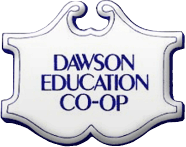Ways to protect yourself while marketing new ideas
/Last Monday, I posted on the types of things individual inventors need to consider when thinking about investing in a patent on a new idea. The gist of the article was that patents aren’t a way to easy money — rather, patents create a protectible property interest ripe for investment. So, once an inventor decides to move forward with patenting an invention, what are the options? Here they are, in order from most risky to least risky:
Option 1 — Test market first, then patent
This option involves talking to people in the industry about your idea before seeking patent protection. Your goal is to find out if there are any potential investors/purchasers for your idea before you invest much money. The risks here include: (1) public disclosure of your idea starts a 1-year clock ticking for you to file a patent application, and if you don’t, you cannot get a patent; and (2) industry insiders could take your idea and run with it, and you would face an uphill battle proving it was your idea in court. This is the most risky option because it provides no protection whatsoever.
Option 2 — Nondisclosure agreement
This option is similar to step 1, except that you ask the potential investor/purchaser to sign a nondisclosure agreement (NDAs) before you tell them what your idea is. In the abstract, this option makes it less likely that a third party would steal your idea. However, practically speaking, you might still have to prove what you disclosed to industry insiders and that they did not already know what you disclosed to them. Many companies are unwilling to sign NDAs for unsolicited idea submissions, in part due to these proof issues. This is a reasonable option for inventors who have already identified serious potential “angel” investors (that is, investors who are not in the same field and thus have little incentive to steal the idea) or have existing partnerships with trusted associates.
Option 3 — Patent pending
The patent pending option means that you begin marketing as soon as you file a patent application. This option allows you to prove what you’ve invented to interested parties, since you’ve already submitted your idea to the patent office and have received a dated confirmation. It also avoids complications about when you disclosed your idea to the public vs. when you filed your patent application. For these reasons, the patent pending option shows that you are serious about your invention and what it takes to protect it. The downside is primarily the cost of getting a patent application on file. This option is the one taken by most of my individual inventor clients, as it represents a good balance between the risk of theft by a third party and getting your product onto the market (and making money) as soon as possible.
Option 4 — Full patent protection
The final option, securing full patent protection before marketing your product, is the least risky. It means that others will not know about your product until it is already patented. Under this situation, a potential thief of your idea would be on notice of the patent and would be subject to additional penalties in a civil patent case for stealing your idea. Most of the time, when I see this approach, it is from existing businesses whose R&D departments are coming up with ideas that are several years from production.





